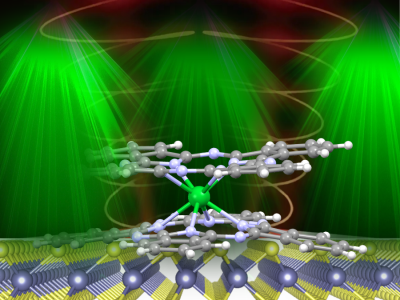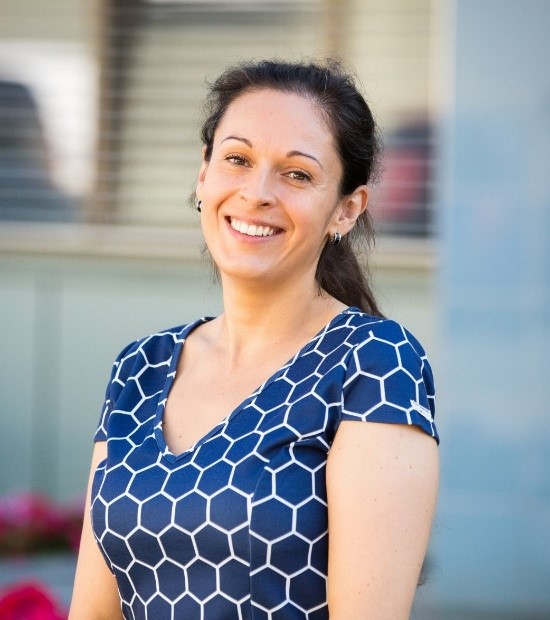
Visualization of the composition of the new 2D material
A new type of two-dimensional material that emits structured light has been created by scientists from the Faculty of Mathematics and Physics of Charles University and the J. Heyrovský Institute of Physical Chemistry of Czech Academy of Sciences. A material with unique properties can improve the density of information in optical communication and increase the polarization sensitivity of optoelectronic devices, displays and sensors that are needed for new generation computers. The study was published in the ACS Nano Journal.
Light is an electromagnetic wave motion that is used in electronic devices to transmit information, to process signals or to communicate. Unstructured light is used in the basic optical communication circuit. However, more information can be processed using suitably polarized light, and recently the use of so-called chiral or structured light has become of great importance. Generally, polarization filters are used to obtain such polarized light, which are very difficult to miniaturize. A team of scientists from the Czech Academy of Sciences and Charles University has created a unique ultra-thin material that can polarize light by itself.
“The beauty of this material is that it produces chiral light even at room temperature, which holds promise for improving current information and quantum technologies,” says Golam Haider of the J. Heyrovský Institute of Physical Chemistry, who was involved in the research.
“Such a unique material can be obtained surprisingly easily by applying special magnetic molecules on a suitable 2D semiconductor,” specifies Martin Kalbáč from the J. Heyrovský Institute. In this case, on a monolayer of molybdenum sulphide (MoS2) with a thickness of three atoms.
“We have shown that this material is highly effective and stable for several months, which is absolutely necessary for practical applications,” says Vaibhav Varade from Faculty of Mathematics and Physics of Charles University, the first author of the publication.
Further Improvements in Quantum Technology
This new material of a thickness of several nanometres produces circular polarized light with a very high quantum yield, which promises to be used in miniaturized quantum optoelectronic circuits. The unusual phenomenon was explained by experts from a theoretical group at the Department of Condensed Matter Physics of the Faculty of Mathematics and Physics of Charles University in Prague.
“Exceptional optical properties are made possible by special energy transfer between magnetic molecules and a 2D semiconductor that persists to low temperatures, where magnetic molecules become quantum objects,” adds Jana Kalbáčová Vejpravová from Faculty of Mathematics and Physics of Charles University, who introduced the concept of spin hybrids based on magnetic molecules and 2D semiconductors in her ERC Starting Grant TsuNAMI.
Scientists also tested the new material at liquid helium temperatures (up to -269°C) and in the presence of an external magnetic field. They see it as very promising for an application in optoelectronics and quantum communication.
FURTHER INFORMATION:
doc. RNDr. Ing. Martin Kalbáč, Ph.D.

J. Heyrovský Institute of Physical Chemistry of Czech Academy of Sciences
266 053 804
martin.kalbac@jh-inst.cas.cz
https://www.jh-inst.cas.cz/jh_employee/kalbac
Dr. Haider Golam

J. Heyrovský Institute of Physical Chemistry of Czech Academy of Sciences
266 052 113
haider.golam@jh-inst.cas.cz
prof. RNDr. Jana Kalbáčová Vejpravová, Ph.D.

Faculty of Mathematics and Physics of Charles University
951 552 735
jana@mag.mff.cuni.cz
https://kfkl.mff.cuni.cz/en/people/vejpravova
Vaibhav Varade, Ph.D.

Faculty of Mathematics and Physics of Charles University
951 552 735
vaibhavtvarada@mag.mff.cuni.cz




